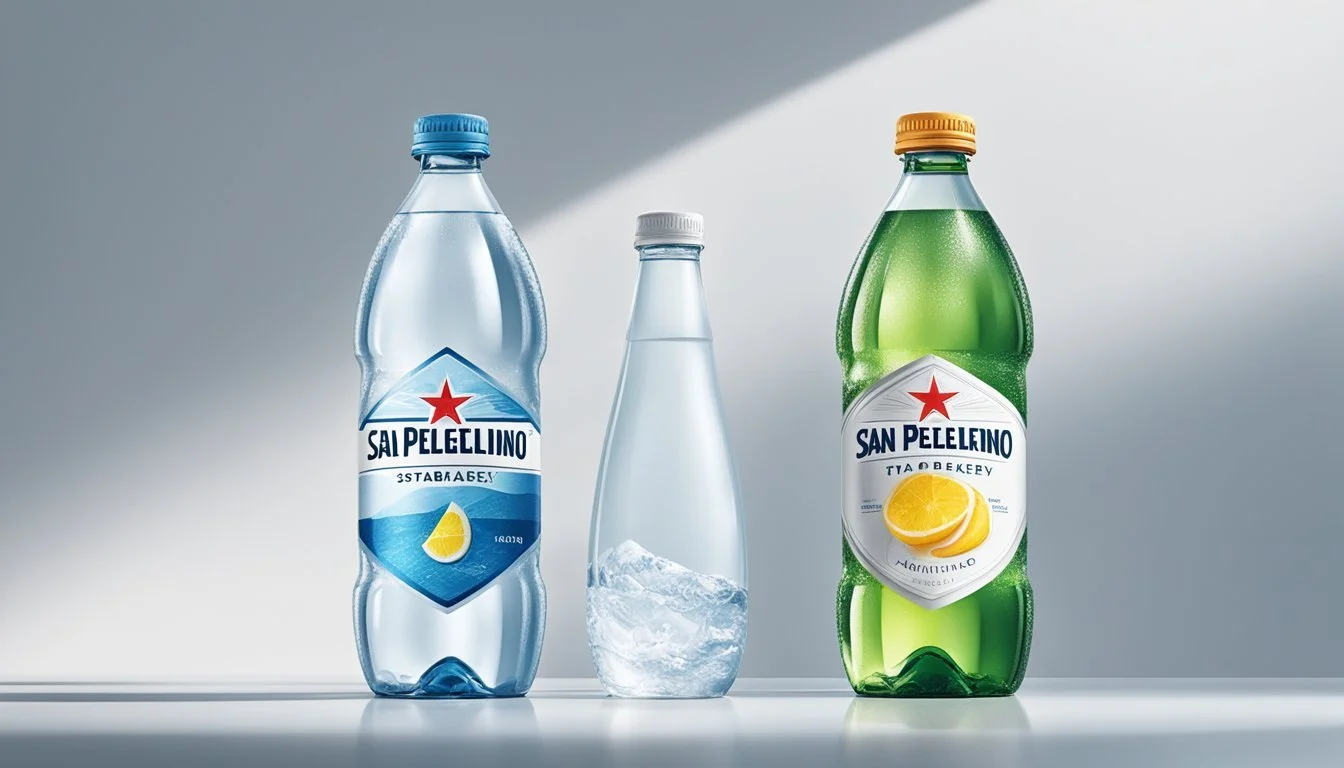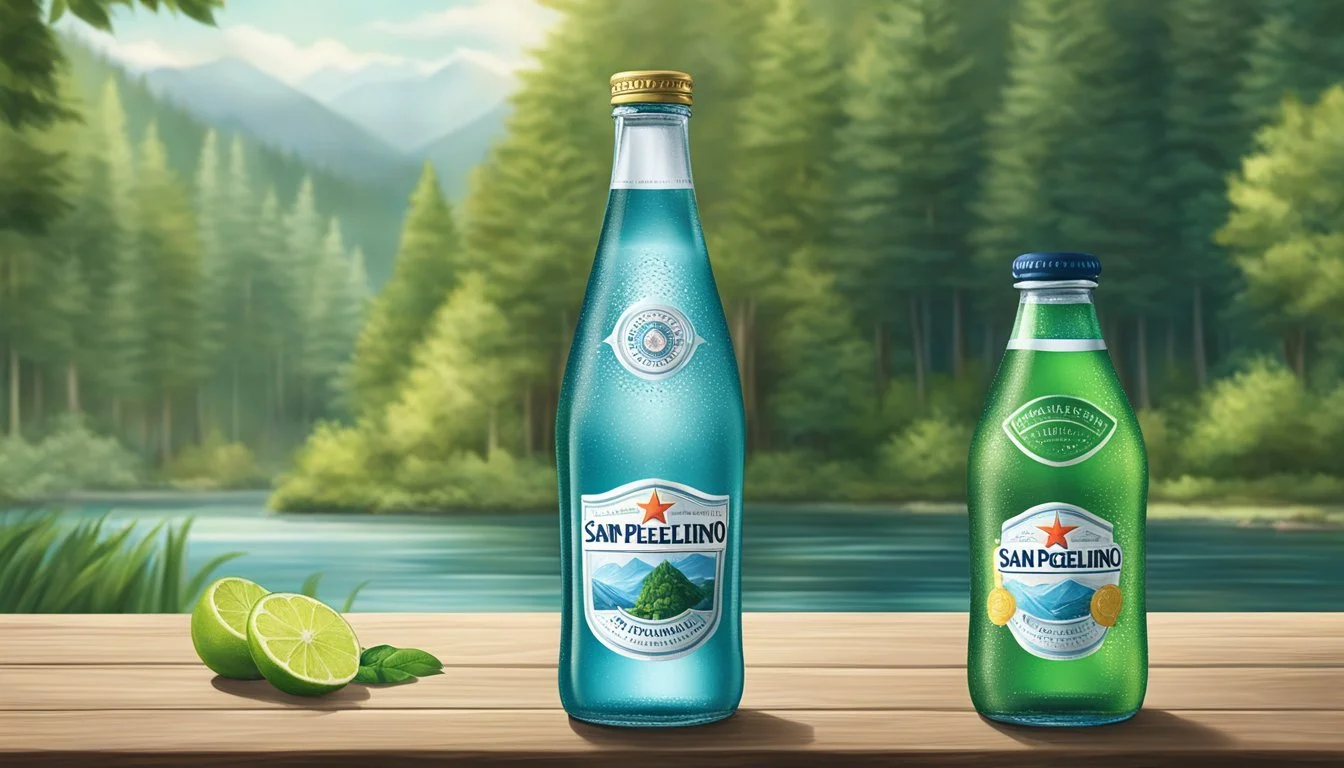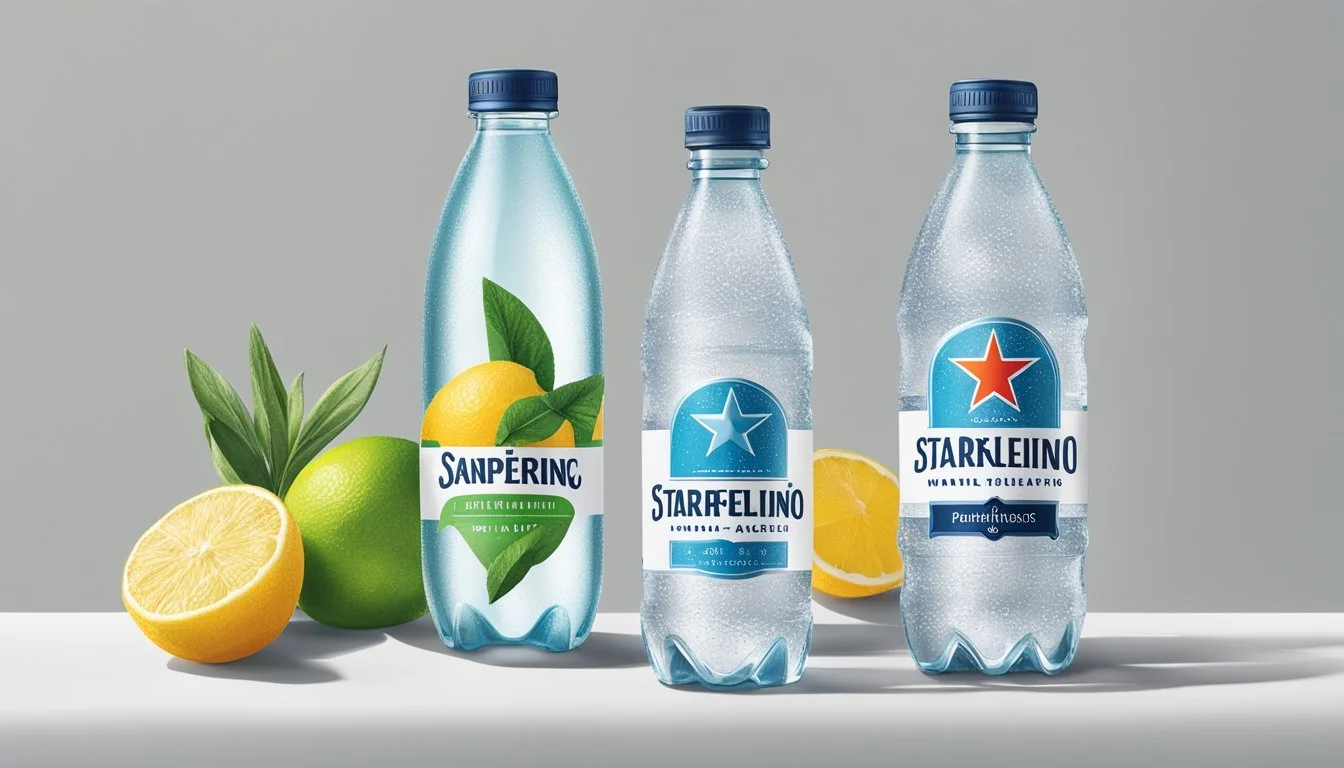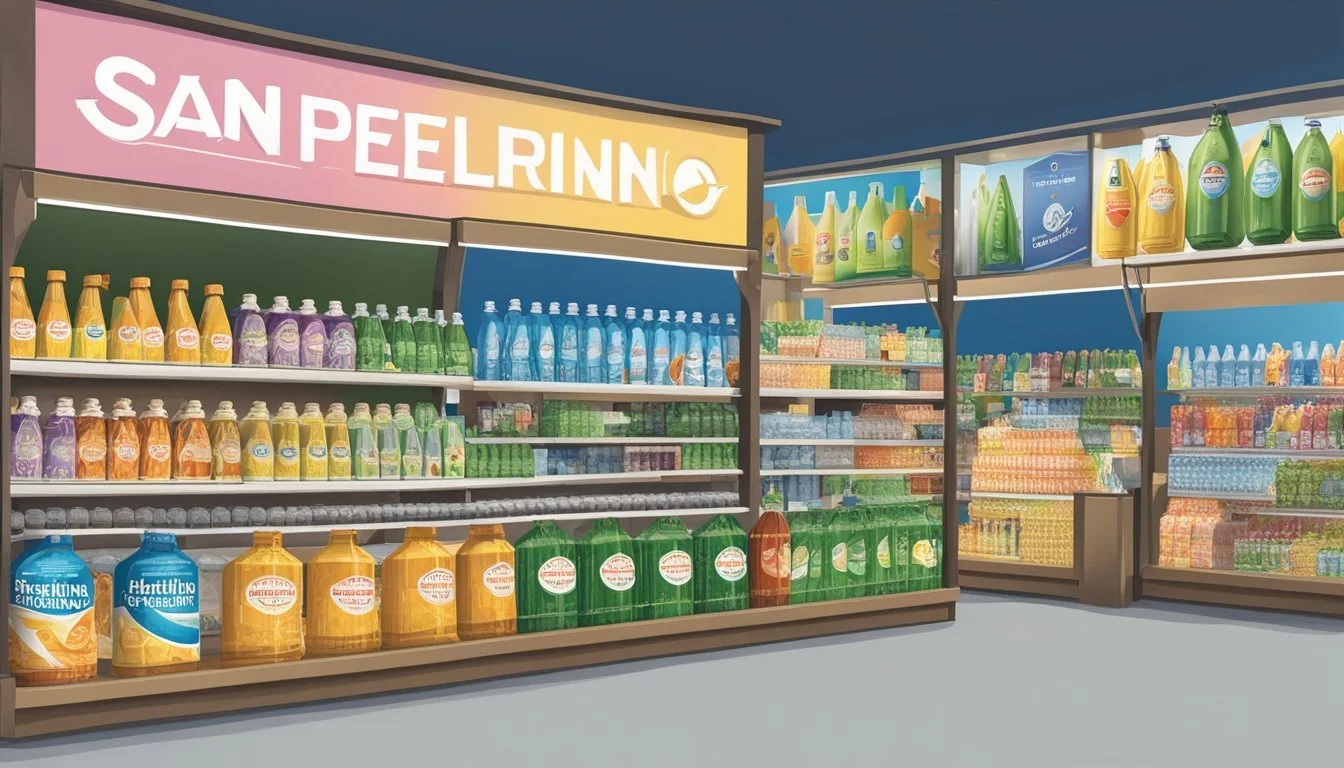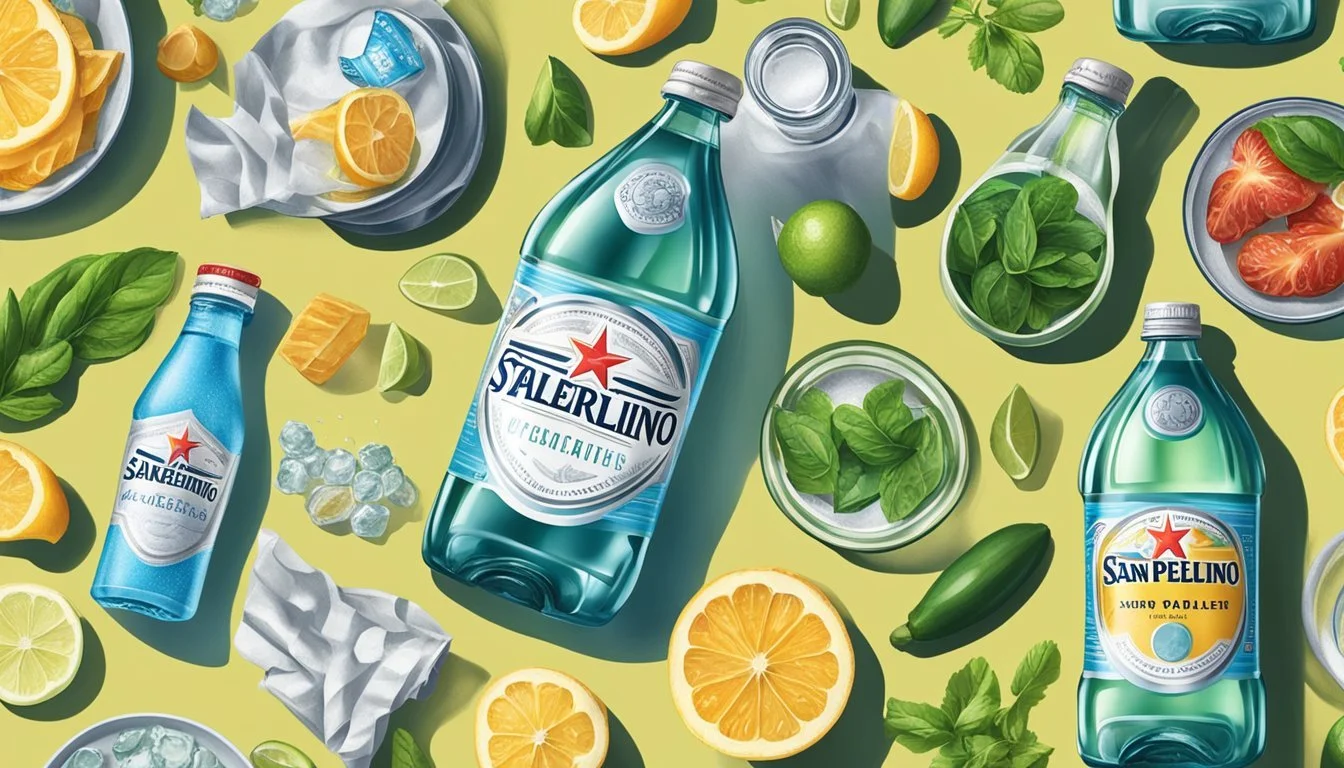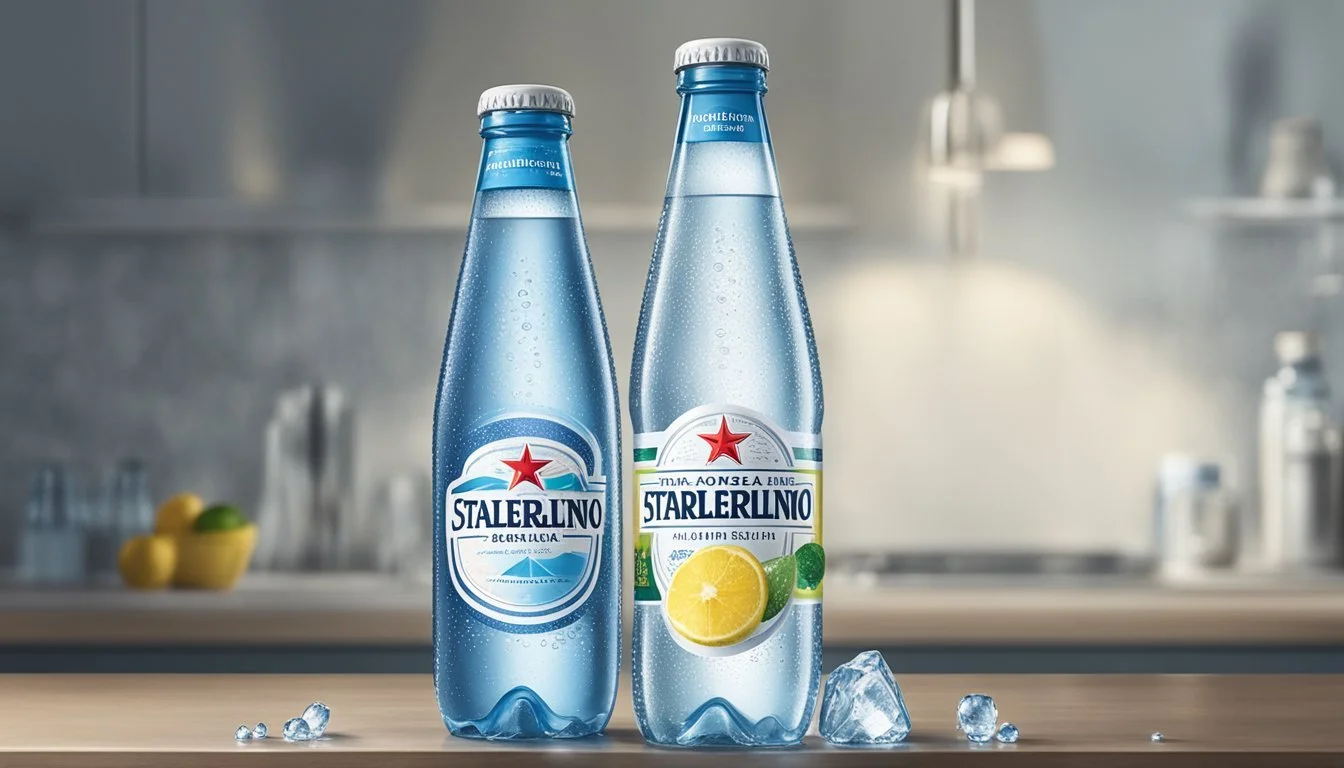San Pellegrino vs. Starkey
Which Bottled Water is Better for You?
When it comes to choosing between San Pellegrino and Starkey bottled waters, it's all about preference and what you're looking for in a bottled water. San Pellegrino, known for its sparkling mineral water, has a rich history and a distinctive crisp taste favored by many for its effervescence and slight hint of minerals. Many associate it with a premium drinking experience, often seen as a luxury choice in fine dining.
Starkey, on the other hand, offers a unique twist with its naturally alkaline water sourced from a geothermal spring. This gives it a smooth and velvety texture, making it appealing for those who prefer still water with beneficial minerals for hydration. Its higher pH level also adds a health-conscious appeal, which has garnered a dedicated following.
While both brands cater to different tastes and occasions, the choice between San Pellegrino and Starkey ultimately depends on whether one prefers sparkling or still water, and the specific attributes of taste and health benefits they value most in their drinking water.
Origin and Source
San Pellegrino and Starkey water both have unique historical significance and distinct geographical sources that contribute to their renowned profiles.
Historical Roots
San Pellegrino hails from Italy, with a history dating back to 1899 when its natural mineral water was first bottled. The brand grew in popularity throughout the 20th century, particularly in association with gourmet dining and fine cuisine.
Starkey water, on the other hand, emerges from the United States and has historical roots tracing back to 1896. Originating from the Starkey Hot Springs in Idaho, it has been a notable choice for those seeking water with unique mineral content.
These historical roots give each brand a rich legacy and contribute to their distinctive market positions.
Geographical Sources
San Pellegrino’s water comes from natural springs in the Italian Alps near the town of Bergamo. The water is enriched with minerals due to its journey through volcanic rocks and underground channels, which impart a distinct, crisp taste.
Starkey water flows from a geothermal spring in Idaho, known as Starkey Hot Springs. This source taps into geothermal activity, providing water that is rich in minerals and offers a slightly alkaline pH level.
Both San Pellegrino and Starkey owe their characteristic qualities to these unique geographical origins.
Water Analysis
San Pellegrino and Starkey bottled waters offer distinct characteristics in their mineral contents and pH levels. These factors play crucial roles in determining the taste and potential health benefits of the waters.
Composition and Minerality
San Pellegrino is well-regarded for its mineral-rich profile. Its primary minerals include calcium, magnesium, and sodium, which contribute to its distinctive taste. It contains approximately:
Calcium: 174 mg/L
Magnesium: 53 mg/L
Sodium: 44.1 mg/L
Starkey water, sourced from geothermal springs, also features a notable mineral composition but with different concentrations. Starkey contains:
Calcium: 32 mg/L
Magnesium: 16 mg/L
Sodium: 20 mg/L
Potassium: 0.3 mg/L
While San Pellegrino is more mineral-dense, making it a strong candidate for those seeking a robust flavor, Starkey's lower mineral content results in a milder taste. Both waters contain fluoride and negligible amounts of copper, ensuring essential trace minerals without overwhelming the palate.
pH Levels and Health Implications
San Pellegrino maintains a slightly acidic pH around 7.7, which can complement a diet by providing a slight alkaline effect. The carbonation process also impacts its pH, contributing to its signature crispness.
Contrarily, Starkey boasts a high pH level of 9.6, categorizing it as alkaline water. This higher pH can neutralize stomach acid, potentially helping those with acid reflux. Alkaline waters like Starkey are often sought after for their perceived health benefits, including improved hydration and acid-base balance in the body.
Choosing between San Pellegrino and Starkey largely depends on personal preference and specific health goals. Whether one opts for San Pellegrino's mineral-rich profile or Starkey's alkaline nature, each bottled water brings unique benefits to the table.
Carbonation and Bubbles
Carbonation and bubbles are critical aspects that differentiate San Pellegrino and Starkey sparkling waters. These characteristics impact the texture and drinking experience of each brand.
Natural vs. Added Carbonation
San Pellegrino is noted for its natural carbonation, a result of the CO2 dissolved in its natural spring water source. The brand ensures that CO2 levels are maintained during bottling. San Pellegrino's bubbles provide a robust texture that appeals to those who prefer more fizz.
In contrast, Starkey sparkling water often has added carbonation. The water undergoes infusion with carbon dioxide to simulate natural carbonation. This results in a more controlled and consistent bubble structure, though it may lack the complexity of naturally carbonated options.
Both brands offer unique experiences. San Pellegrino tends toward a more lively and rich bubble stream, while Starkey’s added carbonation brings predictability and uniformity.
The Efficacy of Carbon Dioxide Retention
Retention of carbon dioxide is another important factor. San Pellegrino’s process of retaining CO2 helps in preserving the natural minerals and maintaining a steady fizz, thanks to its mineral-rich composition. The bubbles in San Pellegrino are noticeably effervescent, contributing to a fuller mouthfeel.
Starkey’s ability to retain carbon dioxide is bolstered by its manufacturing techniques that complement the added carbonation process. They focus on maintaining carbonation levels consistent during bottling and storage, ensuring that bubbles remain consistent and do not dissipate quickly.
Both brands manage CO2 retention effectively but differ in how the bubbles interact with the water’s mineral content. San Pellegrino provides a more traditional sparkling experience, while Starkey delivers a reliable and steady carbonation level.
Tasting Notes
San Pellegrino and Starkey bottled waters offer distinct experiences in terms of flavor, minerality, and crispness. Both waters have garnered attention from enthusiasts and professionals alike.
Flavor Profiles
San Pellegrino is known for its subtle yet lively mineral content. With a slight hint of saltiness, it appeals to those who appreciate a crisp flavor. Its high carbonation level adds to its refreshing profile, making it a popular choice among sparkling water enthusiasts.
Starkey, on the other hand, showcases a more earthy and smooth taste. Sourced from geothermal springs, it presents a low-mineral yet distinctive flavor, leaning towards a softer mouthfeel. It lacks the effervescence of San Pellegrino, providing a still water experience that is quite smooth and gentle.
Sommeliers' Perspectives
San Pellegrino is frequently favored by sommeliers due to its balanced minerality and effervescence. It pairs well with a variety of foods, enhancing subtle flavors without overwhelming the palate. The fizz and brisk finish of San Pellegrino make it a preferred choice in fine dining settings.
Starkey, appreciated for its pure and clean taste, is often highlighted by water sommeliers for its simplicity. Its soft texture and natural flavor profile make it an excellent standalone beverage, especially valued after tasting wines or rich foods. The low mineral content ensures it doesn't clash with complex flavors.
Packaging and Branding
San Pellegrino and Starkey present distinct approaches to their packaging and branding, each tailored to evoke specific consumer sentiments. Both brands focus on aesthetic appeal and environmental considerations in their bottling processes.
Label Design
San Pellegrino utilizes elegant and refined labels featuring its emblematic star, symbolizing its Italian heritage. The labels are often intricate, combining clear fonts with subtle metallic accents.
Starkey, in contrast, emphasizes a minimalist design, often leveraging clean lines and a subdued color palette that underscores its natural and pure product image. The simplicity of Starkey’s design appeals to consumers who value transparency and health.
Bottling Processes
San Pellegrino offers both glass and PET plastic bottles, catering to different market segments. The glass bottles are targeted at upscale dining, while the PET bottles are more practical for everyday use. They ensure that both types maintain the water's quality.
Starkey predominantly uses glass containers, emphasizing sustainability and a premium feel. Glass is chosen to prevent potential leaching of chemicals, thus preserving water purity. Their bottling process focuses on minimizing environmental impact, aligning with consumers' growing eco-consciousness.
Environmental Impact
San Pellegrino and Starkey differ significantly in their approaches to sustainability and waste management. Understanding these differences helps consumers make informed choices about their environmental footprint.
Sustainable Sourcing
San Pellegrino sources its mineral water from the Italian Alps, utilizing natural filtration processes. The spring is carefully monitored to align with environmental standards set by the EPA. However, the logistics of transporting this water globally can increase its carbon footprint.
Starkey, on the other hand, sources its water from geothermal springs in Idaho. This process requires minimal energy, as the water flows naturally to the surface. Starkey emphasizes low-impact extraction techniques that preserve the spring's natural ecosystem.
Recycling and Waste Management
San Pellegrino packages its water in both glass and plastic bottles. The company promotes recycling by using high-quality, recyclable materials. Despite these efforts, the environmental impact of plastic waste remains a concern, even if the bottles are technically recyclable.
Starkey uses mostly glass bottles, which are easier to recycle and produce less environmental waste compared to plastic. The company also encourages consumers to recycle by providing clear information on waste management practices. Efforts to use eco-friendly materials further mitigate waste issues.
By understanding these aspects of sourcing and waste management, consumers can better grasp the environmental impacts of their water choices.
Market Presence
San Pellegrino and Starkey are two prominent names in the bottled water market. This examination focuses on their consumer preferences and their sales and competition within the industry.
Consumer Preferences
San Pellegrino has cultivated a reputation for its sparkling mineral water, often associated with luxury and fine dining. Consumers appreciate its crisp, effervescent quality, which stands out compared to regular still water. The brand loyalty among San Pellegrino drinkers is strong, often linked to its European heritage and premium image.
Starkey, on the other hand, appeals to consumers seeking natural, untreated sources. Sourced from geothermal springs in Idaho, Starkey promotes itself as an American product with a distinct mineral profile. Consumers who prefer alkaline water often choose Starkey for its unique properties, making it a niche yet dedicated market.
Sales and Competition Analysis
San Pellegrino's market presence is bolstered by its global distribution and alignment with high-end restaurants and hotels. Typically priced higher than standard bottled waters, it competes with other premium brands like Perrier and Voss. The brand's strong sales in both retail and hospitality sectors underscore its established position in the market.
Starkey, while not as widely distributed as San Pellegrino, occupies a significant niche market. Its sales largely come from health-conscious consumers and specialty stores. Competing mainly with other alkaline and natural spring waters, Starkey's pricing remains competitive yet reflects its premium positioning. Despite its smaller scale, it maintains a loyal customer base driven by unique product attributes.
Culinary Applications
San Pellegrino and Starkey bottled waters have distinct characteristics that make them suitable for various culinary uses. Their unique mineral compositions and carbonation levels influence their integration into food pairings, mixology, and the broader food and beverage industry.
Food Pairings and Mixology
San Pellegrino is known for its sparkling bubbles and rich mineral content. It pairs excellently with fine dining, enhancing the flavors of high-end dishes such as seafood and delicate appetizers. The effervescence helps cleanse the palate, making it ideal for pairing with oily or rich foods.
Starkey, known for its smooth, still water profile sourced from geothermal springs, complements soft-flavored dishes and fine wines. Its subtle mineral content doesn't compete with the flavors of the food, making it suitable for delicate cuisines, including vegetarian or lightly seasoned dishes.
In mixology, San Pellegrino's carbonation adds an appealing fizz to cocktails. Bartenders often use it in spritzers and as a mixer with spirits to create refreshing drinks. Starkey, on the other hand, is favored in mocktails or as a hydrating ingredient in non-alcoholic beverages, providing a clean base without altering the flavor profile.
Influence on Food and Beverage Industry
San Pellegrino and Starkey have influenced the food and beverage industry significantly. San Pellegrino's association with gastronomy has positioned it as a staple in restaurants and culinary events globally. Its distinctive taste and sparkling nature have made it a preferred choice among chefs and sommeliers.
Starkey's unique appeal lies in its pristine, untouched source, offering an exclusive option for high-end dining establishments. Its use in premium contexts underscores its value in presenting natural and pure flavors that align with contemporary trends of simplicity and authenticity in cuisine.
Flavored waters and cocktails crafted with these bottles often highlight their unique properties, further embedding them into the culinary culture. This influence extends to branding and marketing, where both brands leverage their premium status to appeal to discerning consumers in the beverage industry.
Comparative Analysis
San Pellegrino and Starkey offer distinct features that set them apart in the bottled water market. San Pellegrino, an Italian sparkling mineral water, contrasts with Starkey, known for its pure still water.
Head-to-Head: San Pellegrino vs. Starkey
San Pellegrino
San Pellegrino hails from Italy and is renowned for its sparkling mineral water. It is characterized by its unique mineral composition, including calcium, magnesium, and bicarbonate. The effervescence and subtle mineral taste make it a favorite for dining and fine drinking.
Starkey
Starkey, on the other hand, offers still water sourced from deep within the earth. This American brand focuses on natural purity with minimal mineral content. Its clean, refreshing taste appeals to those who prefer non-sparkling water options.
Comparison
Feature San Pellegrino Starkey Origin Italy USA Type Sparkling Mineral Water Still Water Key Minerals Calcium, Magnesium Minimal Mineral Content Taste Profile Effervescent, Mineral Pure, Clean
Conclusion
Choosing between San Pellegrino and Starkey depends on personal preference. San Pellegrino's sparkling quality suits those looking for a fizzy drink, while Starkey's pure still water provides a clean and straightforward hydration option.
Consumer Guide
Understanding the key differences between San Pellegrino and Starkey bottled waters can help consumers make informed decisions. This guide focuses on price points, value, and tips for selecting quality water.
Price Points and Value
San Pellegrino is commonly known for its premium pricing due to its brand prestige and quality. A typical 24-pack of San Pellegrino can range from $20 to $30, depending on the retailer and location.
Starkey, positioned as an artisanal spring water, also tends to be higher priced than mainstream brands, averaging around $30 for a 24-pack. Considering both brands, consumers might find Starkey a slightly more expensive option, but the difference is often negligible.
For those seeking value, buying in bulk or during sales can be beneficial. Both brands sometimes offer promotions or discounts, particularly online. Comparing unit costs and watching for deals can help consumers get the best value for their money.
Tips for Selecting Quality Water
When choosing bottled water, it’s important to consider the ingredients. San Pellegrino is noted for its mineral content, providing a crisp and refreshing taste. Starkey, on the other hand, is praised for its purity, often sourced from deep artesian wells.
Examine the labels for information on water sources and any additives. San Pellegrino contains naturally occurring minerals like calcium and magnesium. Starkey focuses on delivering pure, unadulterated water, free from added ingredients.
Taste preferences also play a role; some may prefer the slight tang of San Pellegrino, while others opt for the smooth profile of Starkey.
Additionally, considering the environmental impact and sustainability of packaging can help in making a conscientious choice. Both brands offer recyclable packaging, but San Pellegrino’s association with glass bottles may appeal to eco-conscious consumers.
By focusing on these factors, consumers can select the bottled water that best suits their needs and preferences.
Final Thoughts
San Pellegrino and Starkey each have unique attributes that cater to different preferences.
San Pellegrino is celebrated for its sparkling quality. Its fine carbonation provides a refreshing experience, making it a popular choice in social settings. It’s packaged in elegant glass bottles, adding to its premium image.
Starkey, by contrast, focuses on its natural mineral content and high pH level. Sourced from springs, it promotes a health-centric approach to hydration. Its still water profile is favored by those who appreciate a more subtle mineral taste.
In terms of flavor, San Pellegrino often comes off as crisp and invigorating. The added carbonation enhances this effect, even as some prefer its lighter fizz compared to other brands. Starkey's taste is clean and pure, reflecting its natural mineral content without the added carbonation.
Price also sets these brands apart. San Pellegrino’s premium image means it is often priced higher, aligning with its luxury market positioning. Starkey is typically more accessible, providing value for those seeking natural mineral benefits without a luxury price tag.
Feature San Pellegrino Starkey Type Sparkling Still Packaging Glass Bottle Plastic Bottle Minerals Added Carbonation Natural Minerals pH Level Neutral High Pricing Higher Moderate
Each water has its own appeal, and preference largely depends on the consumer's taste and hydration needs.
More About San Pellegrino
Acqua Panna vs San Pellegrino: Which Bottled Water is Better?
Boxed Water vs San Pellegrino: Which Bottled Water is Better?
Core Hydration vs San Pellegrino: Which Bottled Water is Better?
Ice Mountain vs San Pellegrino: Which Bottled Water is Better?
Icelandic Glacial vs San Pellegrino: Which Bottled Water is Better?
Just Water vs San Pellegrino: Which Bottled Water is Better?
Mountain Valley Spring Water vs San Pellegrino: Which Bottled Water is Better?
Nestle Pure Life vs San Pellegrino: Which Bottled Water is Better?
Poland Spring vs San Pellegrino: Which Bottled Water is Better?
San Pellegrino vs Alkaline88: Which Bottled Water is Better?
San Pellegrino vs Aqua Carpatica: Which Bottled Water is Better?
San Pellegrino vs Cascade Mountain: Which Bottled Water is Better?
San Pellegrino vs Castle Rock: Which Bottled Water is Better?
San Pellegrino vs CBD Living: Which Bottled Water is Better?
San Pellegrino vs Crystal Geyser: Which Bottled Water is Better?
San Pellegrino vs Crystal Lake: Which Bottled Water is Better?
San Pellegrino vs Essence pH10: Which Bottled Water is Better?
San Pellegrino vs Hawaii Volcanic: Which Bottled Water is Better?
San Pellegrino vs Hawaiian Springs: Which Bottled Water is Better?
San Pellegrino vs Kirkland Signature: Which Bottled Water is Better?
San Pellegrino vs Liquid Death: Which Bottled Water is Better?
San Pellegrino vs Open Water: Which Bottled Water is Better?
San Pellegrino vs Proud Source: Which Bottled Water is Better?
San Pellegrino vs Purely Sedona: Which Bottled Water is Better?
San Pellegrino vs Richard's Rainwater: Which Bottled Water is Better?
San Pellegrino vs Simple Truth: Which Bottled Water is Better?
San Pellegrino vs Smartwater: Which Bottled Water is Better?
San Pellegrino vs Solan de Cabras: Which Bottled Water is Better?
San Pellegrino vs Talking Rain AQA: Which Bottled Water is Better?
San Pellegrino vs Topo Chico: Which Bottled Water is Better?
San Pellegrino vs Weird Water: Which Bottled Water is Better?
San Pellegrino vs Whole Foods 365: Which Bottled Water is Better?
San Pellegrino vs Whole Foods Italian Still Mineral water: Which Bottled Water is Better?
San Pellegrino vs Zephyrhills: Which Bottled Water is Better?
More About Starkey
Icelandic Glacial vs Starkey: Which Bottled Water is Better?
Mountain Valley Spring Water vs Starkey: Which Bottled Water is Better?
Starkey vs Kirkland Signature: Which Bottled Water is Better?
Starkey vs Richard's Rainwater: Which Bottled Water is Better?
Starkey vs Whole Foods Italian Still Mineral water: Which Bottled Water is Better?

